How to Choose Your Watercolor Brushes
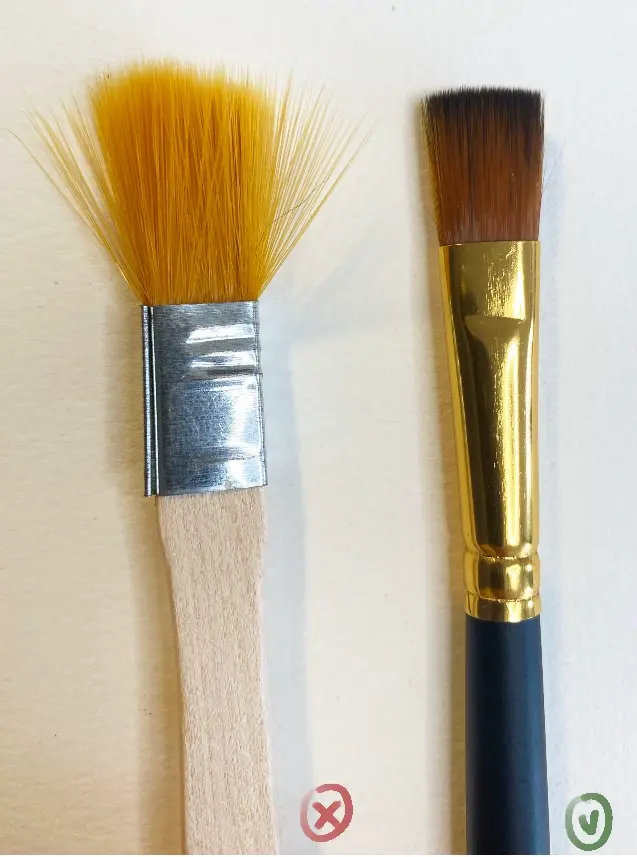
Sometimes we can be overwhelmed by the choice of brushes available, yet in watercolor, brushes directly influence the quality and fluidity of your creations. A good brush will allow you to better master the various watercolor techniques, whether it involves fine details or broad washes.
So, in this article we will look at how to choose quality brushes that are suited to your needs.
The Importance of a Good Brush for Watercolor Painting
Choosing a good brush is crucial when painting in watercolor, as it directly affects your technique and the quality of your work. A suitable brush allows you to better control the amount of water and pigment, and therefore create more subtle and precise effects.
A bad brush, on the other hand, can make the work more difficult and prevent you from mastering fine details or gradients. Investing in a few good quality brushes, suited to your style and needs, will save you time and give you satisfaction in your practice.
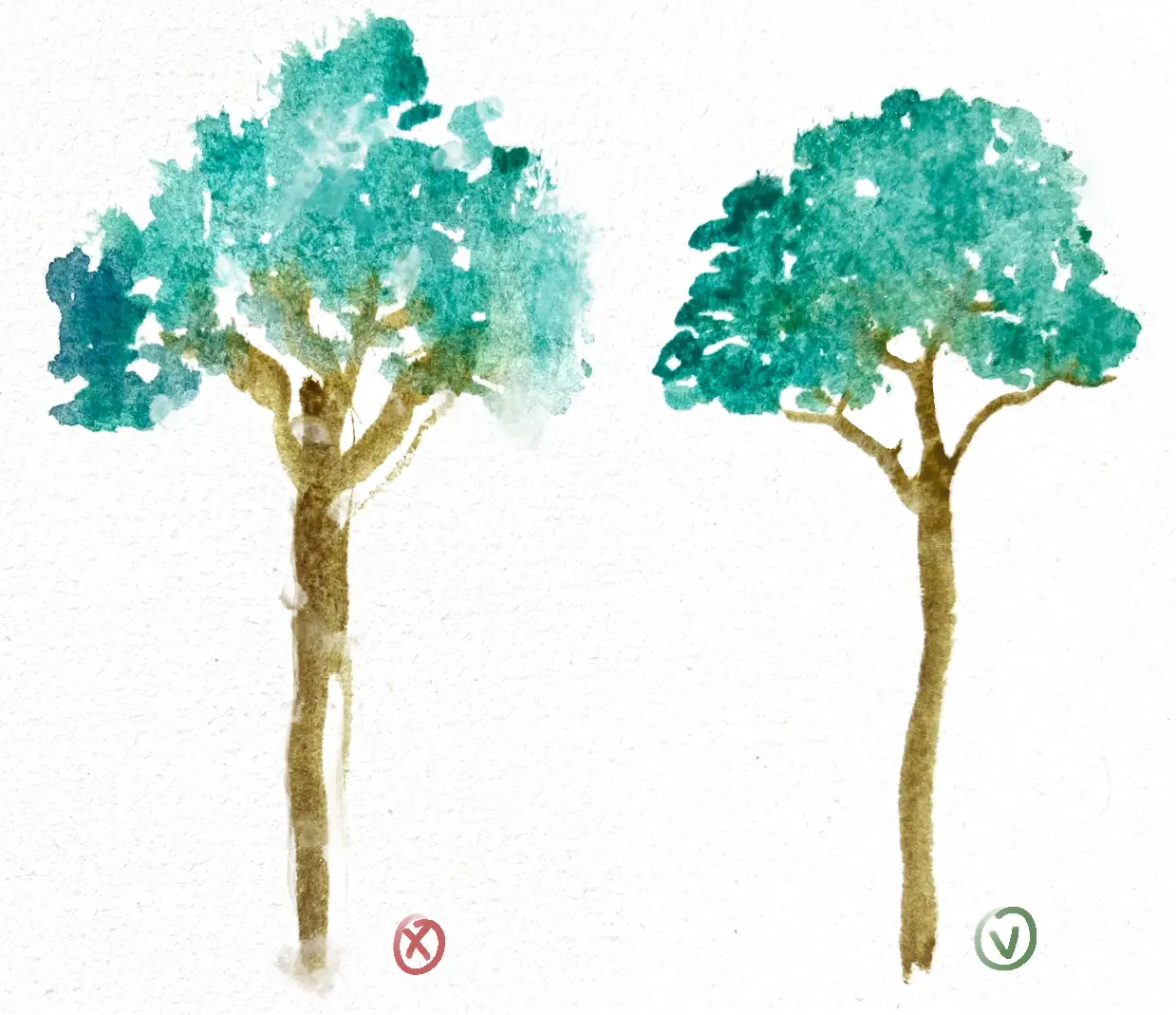
Anatomy of a Brush
Before delving into all the different types of brushes, it's important to revisit their structure. The anatomy of a brush consists of three main parts: the handle, the ferrule, and the bristles. The handle is the part you hold and can be made of wood or plastic.
The ferrule is the metal part that fixes the bristles to the handle and holds them together. Finally, the bristles form the tip of the brush and can be either natural or synthetic.
A good brush must therefore combine good quality across all these elements.

The Different Types of Brushes
You will often see a number indicated on the bottom of your brush; this represents its size. These sizes are not always standard as they can vary between brands, but generally, the smaller the number, the finer and better suited for detail work the brush will be, whereas the larger the number, the thicker and more suitable for broad strokes it will be.
Round Brushes
Round brushes are the most versatile for watercolors. Their shape allows for fine details as well as broader washes. They are ideal for beginners, as they offer great flexibility in techniques.
A medium-sized round brush can be used for clean lines and for filling in areas. It is the perfect tool for those who want a single brush as it is capable of meeting a multitude of needs.
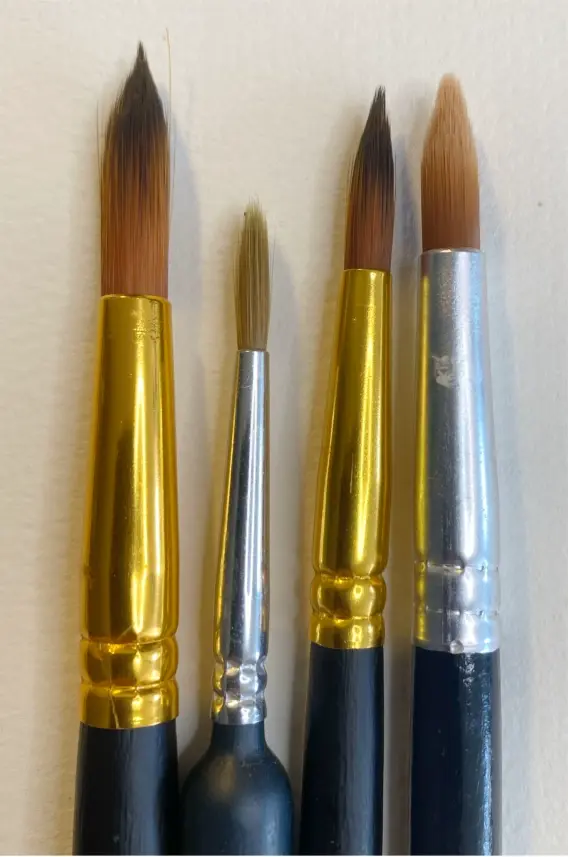
Angled Brushes
Angled or angular brushes have slanted bristles, which allow you to work on sharp and precise angles. They are perfect for details or for creating texture effects, such as leaves or grass.
Thanks to their shape, these brushes also allow for more varied lines that are thin on one side, wider on the other. It's a very useful brush for paintings that require precision and sharp contours.
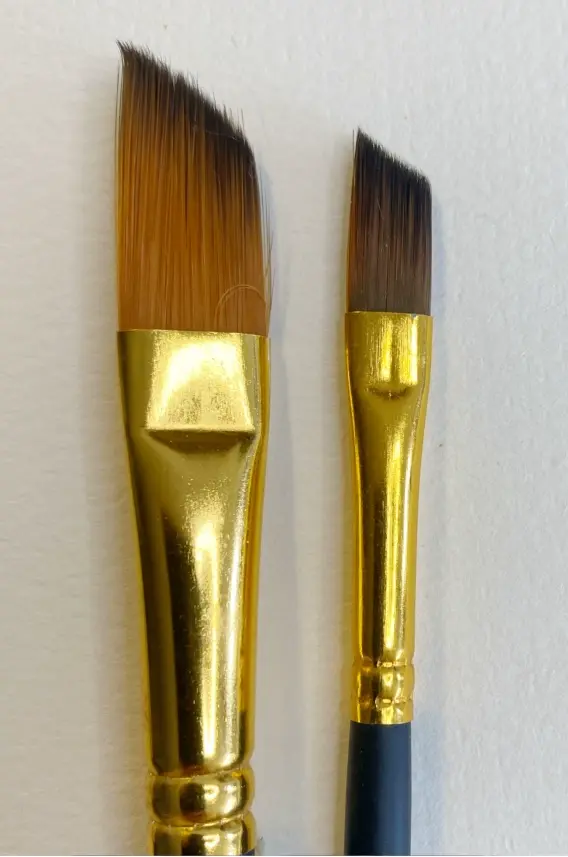
Flat Brushes
Flat brushes have wide, rectangular bristles, which are ideal for washes, large surfaces, and even applications of color. They allow you to quickly cover a large area while offering precise control over the edges.
This is a brush commonly used for backgrounds or broader brush strokes, while still allowing for the creation of clean lines if needed.
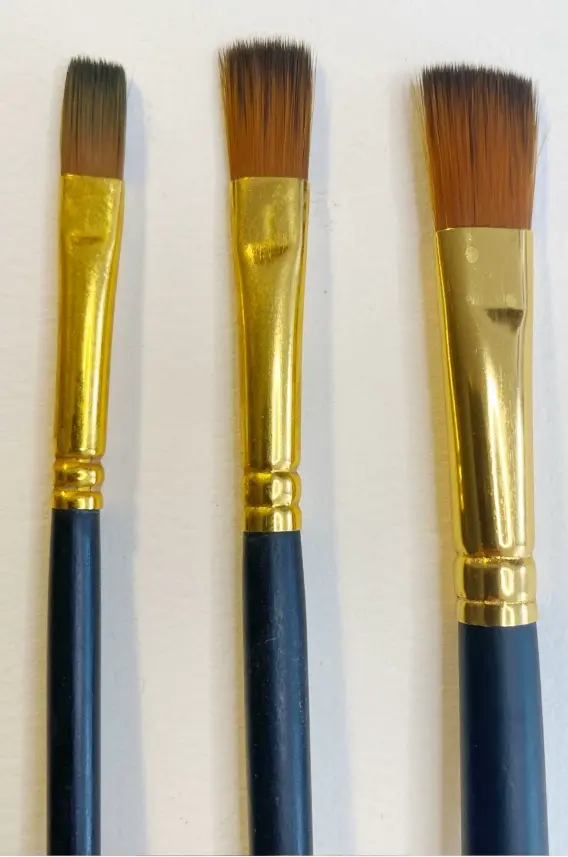
Cat's Tongue Brushes
Cat's tongue brushes are a mix between a flat brush and a round brush. They have an oval shape that allows for both fine lines and broader strokes.
This type of brush is ideal for detailed outlining and small areas, while allowing for a softer application of color. It is particularly useful for subtle transitions between different shades.
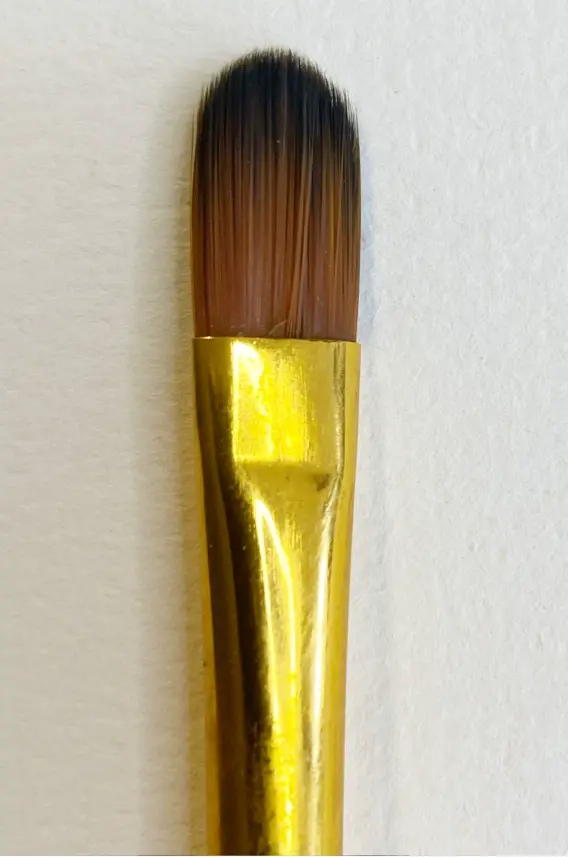
Liner Brushes
Liner brushes are long and thin, designed to create very precise details such as fine lines, small patterns, or delicate strokes. Their elongated shape allows them to hold a large amount of water while ensuring great precision.
This brush is perfect for fine details, hair, contours or small elements in a painting.
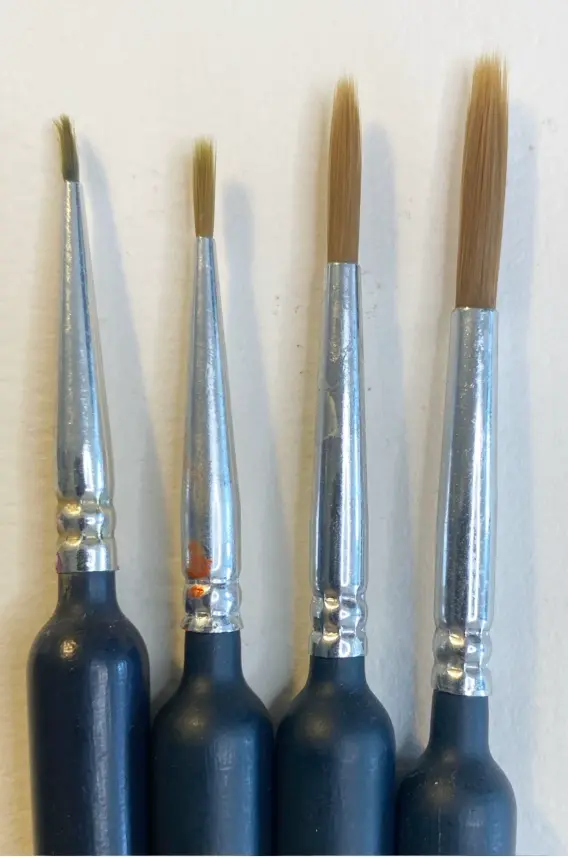
Fan Brushes
Fan brushes have bristles arranged in a fan shape, making them perfect for textured effects such as waves, cloudy skies, or even for adding "draping" or "foliage" effects. This brush is often used for more experimental techniques or for creating interesting textures, such as simulating tree branches or natural effects.
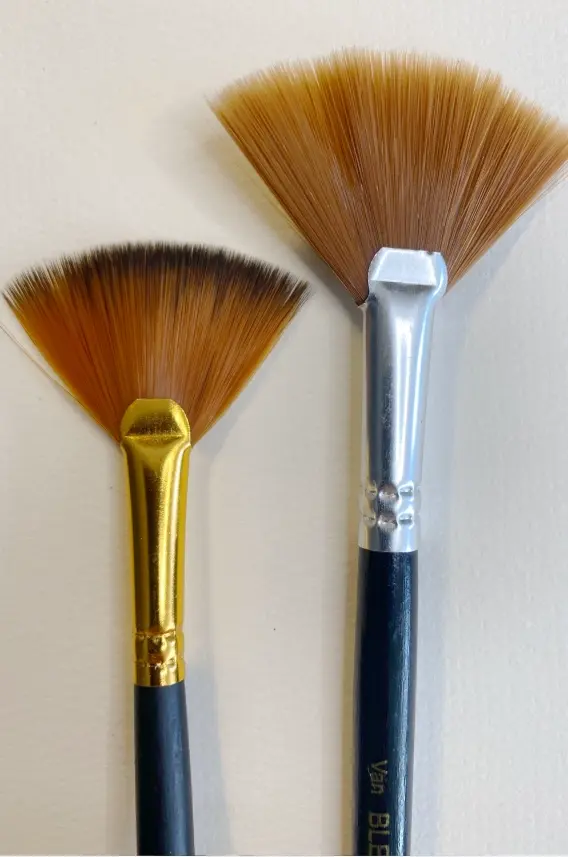
Here is an overview of the types of strokes that can be achieved with each of these brushes. Remember that they are available in various sizes and that the choice of a tip shape will mainly depend on your tastes or needs.
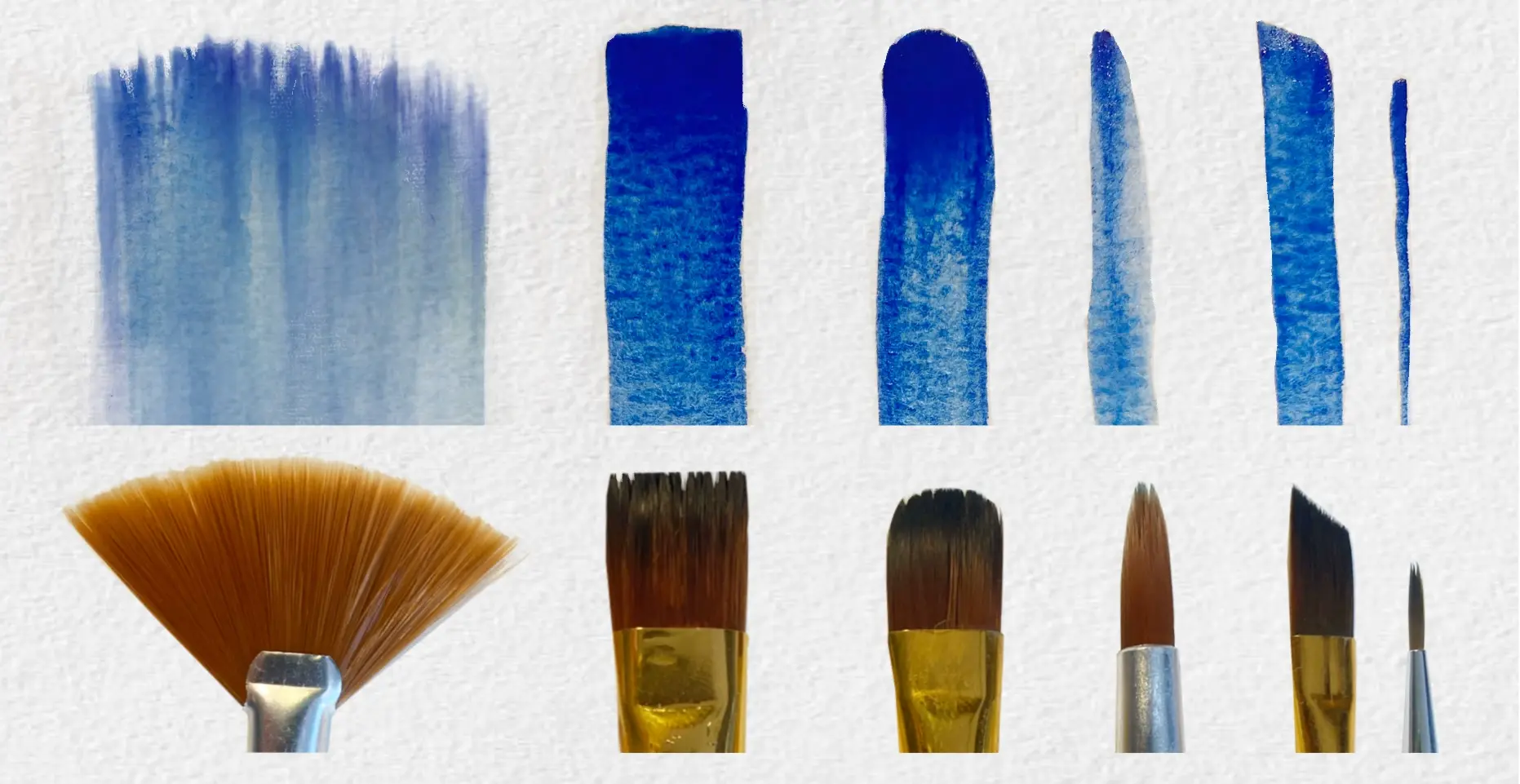
Brush Materials
There are three main types of bristles for watercolor brushes: synthetic bristles (on the left), natural bristles (on the right), and mixed bristles (in the center). Natural bristles, such as sable or squirrel, are highly valued for their ability to retain water and create smooth transitions, and they are generally high-end.
Synthetic bristles, on the other hand, are more affordable, durable, and easier to maintain, although they do not retain water as well as natural bristles. Mixed bristles combine the advantages of both, offering good water retention and enhanced durability often at a lower price than brushes made entirely from natural bristles.
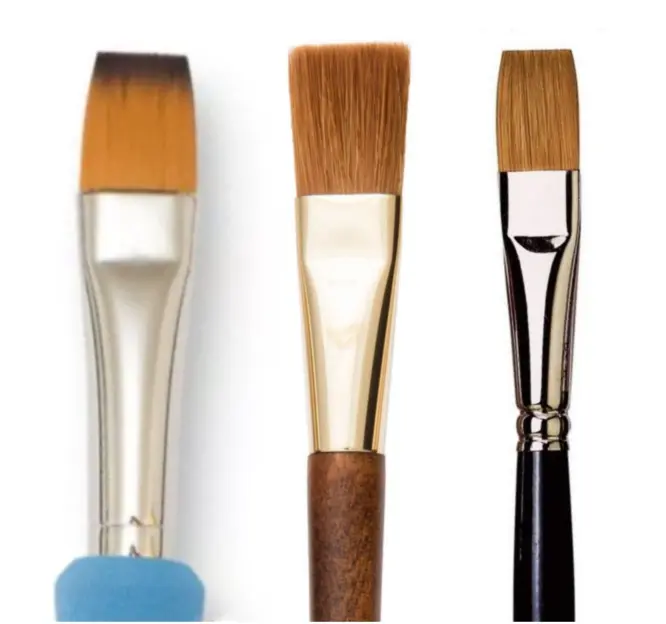
The 5 Essential Tips for Making the Right Choice
Choose a Brush with Quality Bristles
It is essential that the bristles do not twist or split easily. A good quality brush maintains its shape and flexibility even after multiple uses, which allows for better paint control.

Opt for a Solid Ferrule
The ferrule must be well-welded and sturdy. A good ferrule ensures that the bristles stay in place and do not detach as you paint.
Opt for a Comfortable-Sized Handle
The handle should not be too long or too short. It must offer a comfortable and balanced grip, allowing you to paint precisely without hindering your movements. A handle that is too long can make using the brush less smooth.
Avoid Ready-Made Kits
You will find many assortments of brushes, but if you can avoid them, it is better to choose a few brushes based on your needs, suited to your preferences, rather than a multitude of unnecessary and potentially lower-quality brushes.
Water Reservoir Brushes
They are very practical for accurately measuring the amount of water or for traveling, but they do not always have exceptional bristle quality. If you have the option to do without, opt for traditional brushes.
Save
If you are just starting, a good brush is essential but there is no need to buy the ultimate brush at the beginning, you can find very decent brushes for less than €5.
How to Properly Maintain Your Brushes?
Proper maintenance of your brushes is essential for them to last a long time and maintain their effectiveness. After each use, carefully clean them with warm water and mild soap to remove any paint or dirt.
It is important to never leave the brush soaking in water, as this can damage the bristles. Shape the tip with your fingers after each cleaning and let them air dry, always horizontally to preserve their shape. Regular maintenance ensures that your brushes remain efficient and ready to use.
In summary, the right brush makes all the difference to your watercolor experience. Choosing a quality brush suited to your needs will allow you to be precise and enjoy the creative process.
Do not hesitate to try different sizes and shapes of brushes to find those that match your technique and artistic goals, and above all, have fun! 😊
Writer and Illustrator: Chloé Pouteau


merci